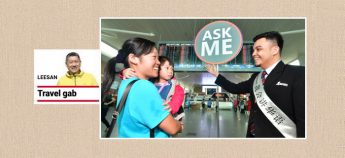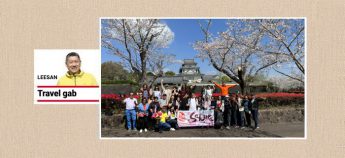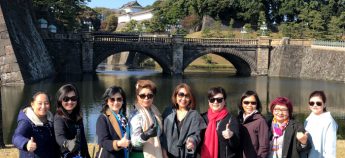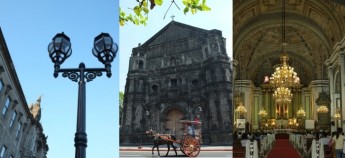Ever had any bad experiences at immigration checkpoints?
Do you ever wonder why immigration officers at airports or border security checkpoints always seem to have a stern look on their faces? Is looking serious part of their SOP? Or are they trained to think that every visitor is a potential national threat until their documents are cleared?
At immigration posts in Singapore and China there are electronic displays that allow visitors to rate the service of the officer on duty – I would never dare to give my honest rating!
I have experienced all kinds of immigration bureaucracy in my travels all around the world. In Russia and other former Soviet Union countries, I would feel nervous all the time because the officials are quite strict and unfriendly.
If you ever go to the United States or Britain, just stay calm and don’t fidget around once you’ve handed over your documents to the immigration officers.
Otherwise, you will be asked a barrage of questions and you have to wait longer. Or worse still – taken aside and sent to the interrogation room.
When I was travelling via train from Dandong, China to Sinuiju, North Korea, a big group of North Korean immigration officers came on board to check passengers’ documents. Some of them even checked the contents of a few iPads; it took them two hours to do all that.
Once, at Belarus, we had to wait for more than 90 minutes to get our visa-on-arrival. This was partly due to the fact that we did not know the correct procedure to do it, and that some of the immigration officers deliberately delayed things. I find that such behaviour towards tourists is quite common among non-European Union and Eastern European countries.
In contrast, our experience with Cuban immigration was really good as the officers were friendly and helpful. Some of the countries in Central and South America are also not too troublesome. This is probably because tourism is a big industry in those parts, so major efforts have been made to improve services at visitor entry/exit points, and the hospitality sector in general.
At times, ground border control procedures can also be very frustrating. We were trying to enter Poland via Belarus, and the border control stations of each country was only about 500m apart. There were not that many tourists around. However, it took us three hours to clear our documents on the Belarus side, and another two hours in Poland!
In such a situation, there really is nothing much anyone can do but to wait and stay calm.
Of course, we understand the importance of immigration SOPs and the heavy responsibility of the officers. But I think there is a lot of room for improvement for many countries when it comes to clearing visitor documents.
Model countries
Some countries do have open and relaxed immigration procedures to complement their economic needs. In Japan, Hong Kong, Thailand, Taiwan, Singapore, Indonesia, Vietnam and China, officers are always on hand to direct tourists to the correct queue, and ease traffic.
I once asked one of the officers at Narita Airport (Japan) about this and discovered that it is part of their SOP to ensure each visitor does not wait in line for more than 15 minutes. It is this kind of efficiency and accountability which makes the process run smoothly.
Meanwhile, Singapore’s Changi Airport recently introduced a fully automated departure process called FAST (Fast and Seamless Travel). It uses integrated facial recognition technology and end-to-end self-service options. This means that the immigration verification and clearance process is not only paperless, but visitors would not have to deal with officers too, unless there is a need to. It is definitely a faster option and secure, too. This world-class feature and seamless experience will definitely make travellers to Singapore feel more welcome, and in turn, create repeat visits.
At the Suvarnabhumi Airport in Bangkok, there are 18 immigration lanes dedicated especially for tourists from China, where 10 million visitors are expected to arrive each year. In addition to these special lanes, authorities are also considering providing multiple-entry visas to China tourists, in an effort to boost tourism following last year’s Phuket boat tragedy.
What about Malaysia?
Malaysia is one of the world’s most visited countries. Tourism is an undeniably huge industry here, and substantial funding has been set aside to promote Malaysia all around the world.
However, our visitor entry/exit points are hardly satisfactory. Immigration officers are not always friendly, which is bad because tourists need to feel welcome as soon as they enter the country.
Immigration lines at the KL International Airport or even Senai International Airport in Johor, for example, are always long and slow-moving. What’s worse is that both queues for inbound and outbound travel are equally as long.
Ministers and other top government officials have been to some of these checkpoints, and yet the situation does not seem to have improved. With advanced technology and top security features of the Malaysian passport, the document clearance process should be a breeze. This problem of “human congestion” at immigration checkpoints needs to be addressed.
Perhaps a good place to start is to really take a look at the SOP and to provide the officers with better training. Network and hardware maintenance also need to be regularly done, so that visitors and returning citizens can no longer hear the excuse “system down” when something is not working correctly.
Leesan, the founder of Apple Vacations, has travelled to 119 countries, six continents and enjoys sharing his travel stories and insights. He has also authored two books.
全球超过80000家酒店,Apple101助您轻松订房,出行无忧,绝对优惠价。入住期间付款,多数客房可免费取消!














